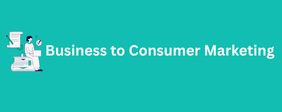Building a strong B2B email list is like finding a treasure map for your business. It helps you talk directly to other businesses that might want your products or services. Imagine having a list of exactly who you want to reach. This article will show you how to build such a list. We’ll make it simple and easy to understand. Plus, we’ll ensure it helps your business grow. Getting good leads is crucial for success.
A well-built email list is powerful. It lets you send messages directly to your potential customers. This is much better than just hoping they find you. It’s like having a special hotline to the people who matter most. You can share news, offers, and information. This builds relationships and trust over time. Ultimately, it helps you make more sales. So, let’s dive into how to create this amazing tool for your business.
Why a B2B Email List is Your Business’s Best Friend
Think of your B2B email list as a direct line to future business partners. It’s a very important tool for any company. Firstly, it gives you a way to communicate regularly. You can share updates about your products. Secondly, you can tell them about new services. This keeps your business top of mind. People are more likely to buy from companies they remember.
Furthermore, an email list is cost-effective. Sending emails is much cheaper than many other types of advertising. You can reach many people at once. It also allows for personalized messages. This means you can tailor your emails. Sending relevant content makes your messages more impactful. It builds trust and shows you understand their needs. Therefore, a good email list saves money and makes more sales.
Thirdly, email lists help you build strong relationships. You’re not just selling; you’re connecting. By providing value in your emails, you become db to data a trusted resource. This relationship can lead to repeat business. It can also lead to referrals. Loyal customers are valuable assets. They help your business grow even further. Building a B2B email list is a smart move.
Finding Your Ideal Customers: The Secret Sauce
Before you build your list, you need to know who you want to reach. Who is your ideal customer? What kind of businesses need your product or service? Think about their size, industry, and location. For instance, if you sell office furniture, you might target new businesses. Or, you might target companies that are expanding. Being clear about your target helps you find the right people. This step is super important.
Once you know your ideal customer, it’s easier to find them. You can look for businesses in specific industries. You can also search for companies of a certain size. Understanding their needs helps you create relevant messages. This means your emails won’t be ignored. Instead, they’ll be welcomed. Knowing your audience is the first step to successful list building. It makes all the difference.
Where to Hunt for Business Emails
Now that you know who you’re looking for, where do you find their emails? There are many good places to start your search. One excellent place is LinkedIn. It’s a professional social media site. You can find many business profiles there. You can also see who works at different companies. Often, you can find their work email addresses too. It’s a goldmine for B2B contacts.
Another helpful tool is company websites. Many businesses list contact information directly on their site. Look for sections like “Contact Us” or “About Us.” You might find general inquiry emails. Sometimes, you can find the vanderbilt television news archive direct emails for key decision-makers. Always be polite when you reach out. Explain why you’re contacting them. This helps build a good first impression.
Furthermore, industry events and trade shows are great. You can meet people in person there. You can exchange business cards. This gives you their contact information. It also lets you have a direct conversation. People are more likely to remember you. This personal touch can be very effective. Always follow up with an email after the event. Remind them of your conversation.

Using Ethical Tools and Tactics
When building your email list, it’s vital to be ethical. Never buy email lists. These lists are often old or contain invalid emails. They can also get you into trouble with anti-spam laws. Instead, focus on building your list organically. This means getting permission to send emails. It’s like asking someone if they want to be friends. They say yes, and then you can talk to them.
One ethical way to get emails is through your website. You can offer valuable content. This could be a free guide or a checklist. In return, people give you their email address. This is called a “lead magnet.” It’s a win-win situation. They get something useful, and you get a new contact. Make sure your offer is truly helpful. This encourages sign-ups.
Another method is to use opt-in forms. These are small boxes on your website. They ask visitors if they want to receive your emails. Make it clear what they will get. For example, “Sign up for our weekly business tips.” Being transparent is key. People appreciate knowing what to expect. This builds trust right from the start.
Keeping Your List Clean and Happy
Once you have an email list, you must keep it in good shape. Regularly clean your list. Remove emails that bounce back. These are addresses that don’t exist anymore. Also, remove people who unsubscribe. It’s better to have a smaller, engaged list. A clean list improves your email delivery rate. It also shows respect for your contacts.
Send valuable and relevant content. Don’t just send sales pitches all the time. Share helpful articles or industry insights. Provide solutions to common business problems. This keeps your audience interested. It makes them look forward to your emails. When you provide value, people are more likely to stay subscribed. They will also be more open to your offers.
Finally, always make it easy to unsubscribe. This might seem strange. But it’s actually a sign of good practice. If someone wants to leave, let them. Forcing them to stay will only lead to complaints. It could also hurt your business reputation. A clear unsubscribe link is essential. It shows professionalism and respect. A happy subscriber is a good subscriber.
Crafting Emails That Get Opened and Read
Having a great list is only half the battle. You also need to write emails that people want to open and read. The subject line is super important. It’s the first thing people see. Make it clear, interesting, and to the point. For example, “5 Ways to Boost Your Sales” is better than “Important Business Information.” Use words that create curiosity.
The content of your email must be valuable. Get straight b2b marketing to the point. Use simple language. Avoid jargon that others might not understand. Break up long paragraphs. Use bullet points for easy reading. Think about what problems your audience faces. Then, offer solutions. Provide helpful tips or new ideas. Always remember to proofread carefully.
End your email with a clear call to action (CTA). What do you want them to do next? Do you want them to visit your website? Do you want them to download a guide? Make it very clear. Use active words like “Learn More” or “Get Your Free Ebook.” A strong CTA guides your readers. It helps them take the next step.
Measuring Success and Adjusting Your Strategy
After sending emails, you need to see how well they did. This is called measuring your results. Look at things like open rates. How many people opened your email? Also, check click-through rates. How many people clicked on a link inside the email? These numbers tell you if your emails are working. If your open rates are low, maybe your subject lines need work.
If your click-through rates are low, perhaps your content isn’t engaging enough. Don’t be afraid to try new things. Test different subject lines. Change the way you write your content. Try different times of day for sending emails. Small changes can make a big difference. This process is called A/B testing. It helps you find what works best.
Continuously learning and adjusting is key. Your audience’s needs might change. New trends might appear. Staying flexible ensures your email list building efforts stay strong. It also keeps your emails relevant. A good strategy is never set in stone. It should always be improving. By paying attention to your results, you can make your B2B email list building even more successful over time. This continuous effort will lead to sustained growth and stronger business relationships.
